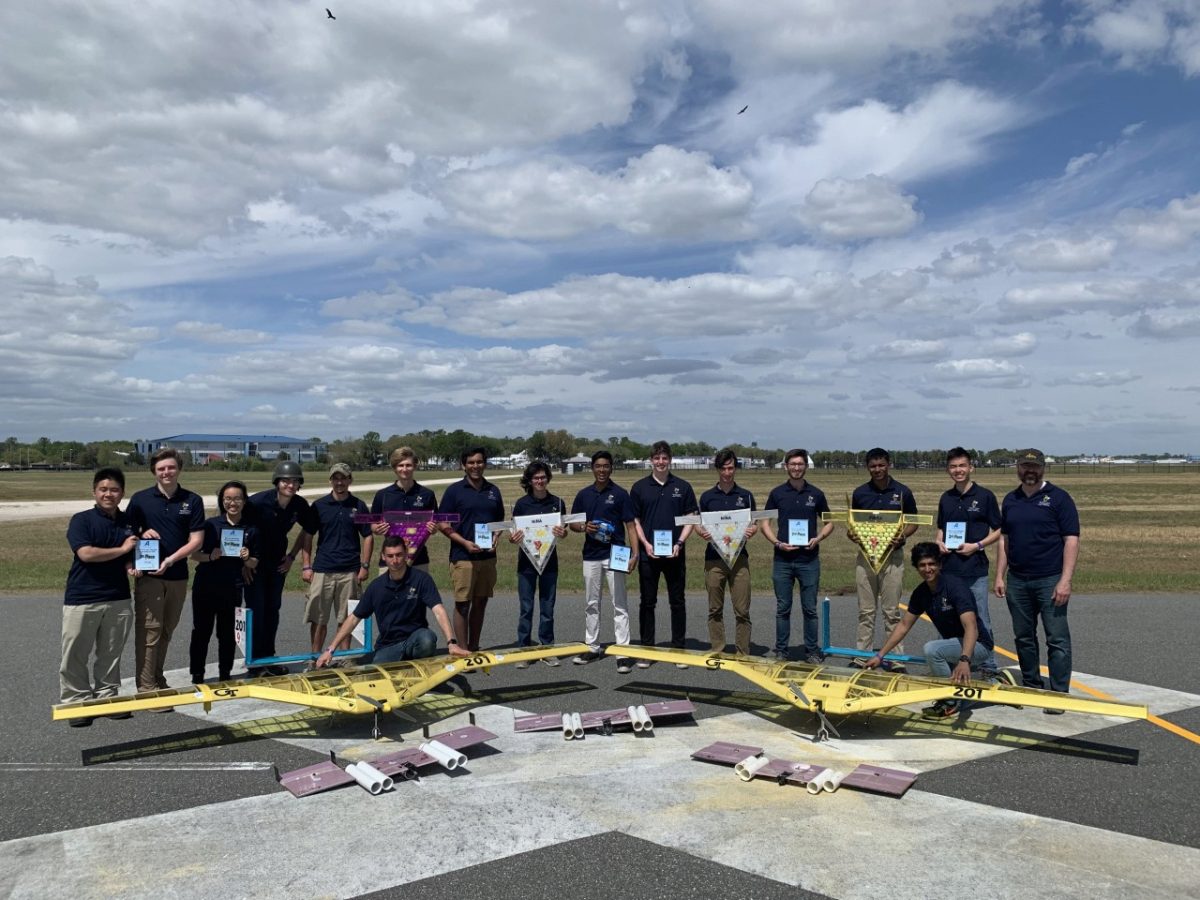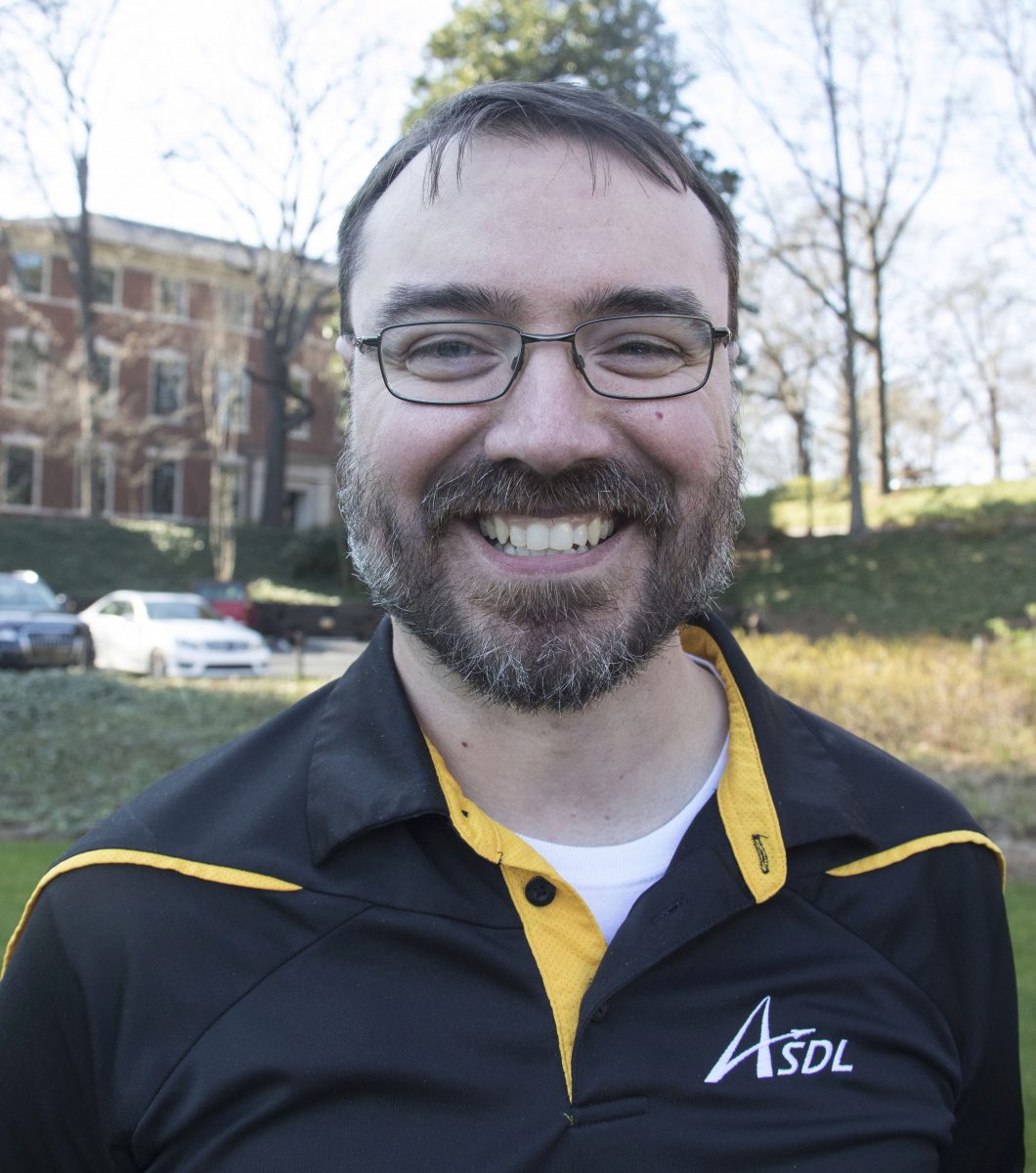 Sweet Sixteen. Only 16 of the 30+ students who worked on Columbuzz and Buzz PipeYear were able to travel to Florida for the final SAE match-up. But they were all there in spirit. Seen here -- with their entries -- are (from left): Andrew Nguyen, Alex Lomis, Emily Ku, Matthew Dick, Andrew Burrell, Jonathan Paravano, Jack Labadia, Pranav Krishnamurthy, Ethan Das, Gowtham Venkatachalam, Alex Porter, Micaiah Smith-Pierce, Dalton Vega, Varun Roy, Jude Augustine, Mark Lau, and DBF advisor Carl Johnson
Sweet Sixteen. Only 16 of the 30+ students who worked on Columbuzz and Buzz PipeYear were able to travel to Florida for the final SAE match-up. But they were all there in spirit. Seen here -- with their entries -- are (from left): Andrew Nguyen, Alex Lomis, Emily Ku, Matthew Dick, Andrew Burrell, Jonathan Paravano, Jack Labadia, Pranav Krishnamurthy, Ethan Das, Gowtham Venkatachalam, Alex Porter, Micaiah Smith-Pierce, Dalton Vega, Varun Roy, Jude Augustine, Mark Lau, and DBF advisor Carl Johnson
For the sixth year running, the student engineers from the AE School's Aerospace Systems Design Lab (ASDL) took home top awards for their entries into the Society of Automotive Engineers (SAE) Aero Design East, held in Lakeland Florida, March 6-8.
 |
| Carl Johnson |
The two unmanned aerial vehicles they spent months building - Buzz PipeYear and Columbuzz - each received the Best Overall and the Best Mission Performance awards for their respective categories (Micro and Advanced Class vehicles). They each also placed second in the Design Report category.
"Winning never gets old, but it's also never a sure thing," said Carl Johnson, who has served as both instructor and advisor for the DBF class and team for more than 10 years.
"Every time we compete, we have to go through a battery of design, prototyping, and operational issues that could definitely go south if our team wasn't on top of things. All of the ideas have to be tested and tested again. Parts need to designed carefully and the students need to know why they are designing them a specific way. We're lucky because we have students like [fourth-year undergraduate] Jonathan Paravano who come back each year and help new students develop the skills and the eye for detail that you need on a winning team. When these students go into the workforce, they will know how to deliver."
Johnson's sentiments were echoed by ASDL's director, Regents Professor Dimitri Mavris:
"We are proud of the students that participated in this competition. This is a great experience and it is rewarding to see them recognized for their efforts.”
ASDL Alumni Swarm at SAE |
|
The two ASDL teams that competed in the 2020 SAE Aero Design East were not alone in Lakeland Florida. David Moroniti, Matthew Warren, Frank Kozel, Lansing Wei, Mustafa Kothawala, Viktor Hromyk, and Tom Neuman all have 'real jobs' now, but, from March 6 to March 8, they were all Yellow Jackets, cheering on their former classmates from the stands at Lakeland. During the actual competition, there was no time for the student engineers to socialize with these elder statesmen, but, says Johnson, when everyone got together for dinner, the stories were rich. It's great to be...GT-AE. |
As the team leader for the Advanced Class entry, Columbuzz, Paravano helped his teammates to build a plane with an 11-foot wingspan that was ostensibly tasked with delivering 'supplies' (water bottles and foam footballs) and 'colonists' (pingpong balls) to a new 'colony' (a 50-foot-wide target) from an altitude of ~100 feet. Before it could drop its supplies, Columbuzz had to be remotely maneuvered to just the right location, a task that was accomplished using a student-designed and student-operated ground station.
"Developing an aircraft to excel at a mission this complex took dedication and perseverance," said Paravano. "I am grateful to work with this phenomenal team."
Delivering the colonists to their destination were three gliders - The Nina, Pinta, and Santa Maria - that were launched from Columbuzz at an altitude of less than 100 feet and at a distance of at least 200 feet from the target. When these nine-ounce gliders (with their ping pong ball payloads) landed, the smoothness of their touchdown was measured by an embedded sensor that essentially told the judges whether 'passengers' had actually survived the trip. Of course, any damage to the vehicle itself would also be noted by judges.
The Micro Class entry, Buzz PipeYear, was a lot smaller (~5+ pounds) but it was not lacking for challenges. For one thing, it had to be delivered to the competition in a relatively small (12" x 13" ) box and its assembly had to be timed (it took them 20 seconds). It was hand-launched, but remotely navigated by a pilot in the ground station. None of this was easy.
"It was quite heavy for the amount of wing and propulsion, it had," said Johnson. "And the pilot we'd had on the team for the last five or six years, Matt Warren, was gone, so we had to train a new pilot."
That pilot was Gowtham Venkatachalam, a third-year undergraduate, who lead the Micro Class team. Johnson was full of praise for the first-time pilot's skills and work ethic:
"Gowtham was exceptionally confident, which helped a lot. Radio-controlled pilots have a lot to manage. They have to listen to the ground station while maintaining a consistent, stable flight pattern. That takes a lot of practice, which is something Gowtham dove into. As the pilot for both the Micro and Advanced Class vehicles, he put in more than 175 practice flights before we went to competition. He's also put in 63 test flight's for next month's AIAA competition, which, unfortunately, was just canceled. That's the kind of dedication that makes a difference."